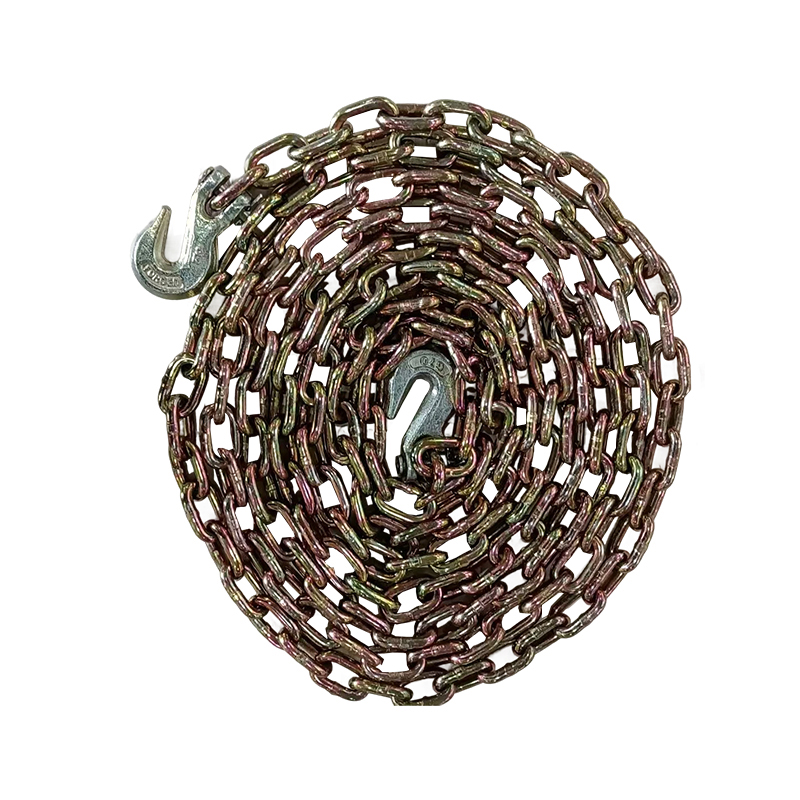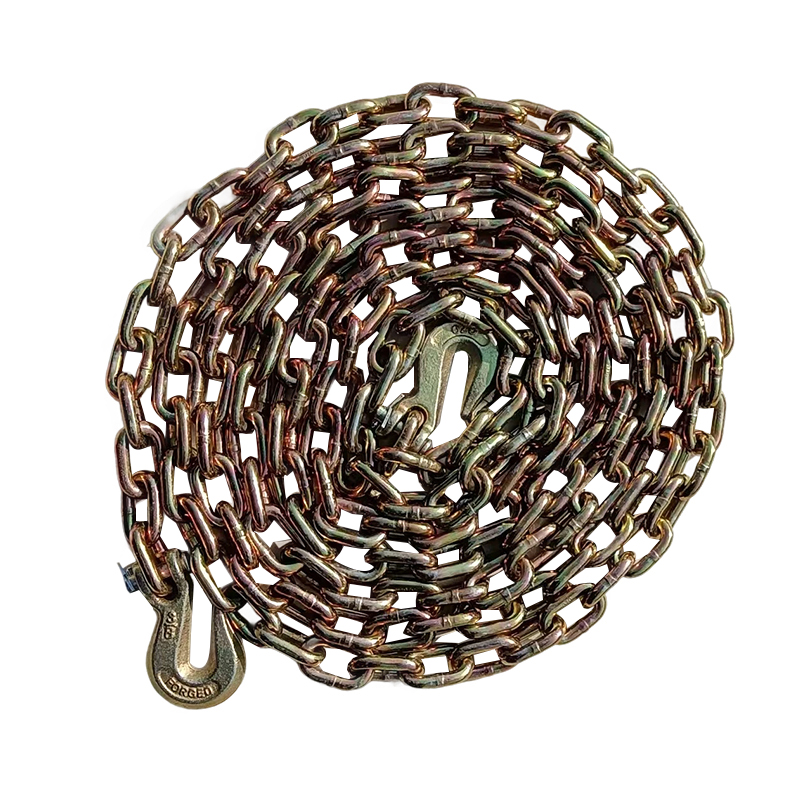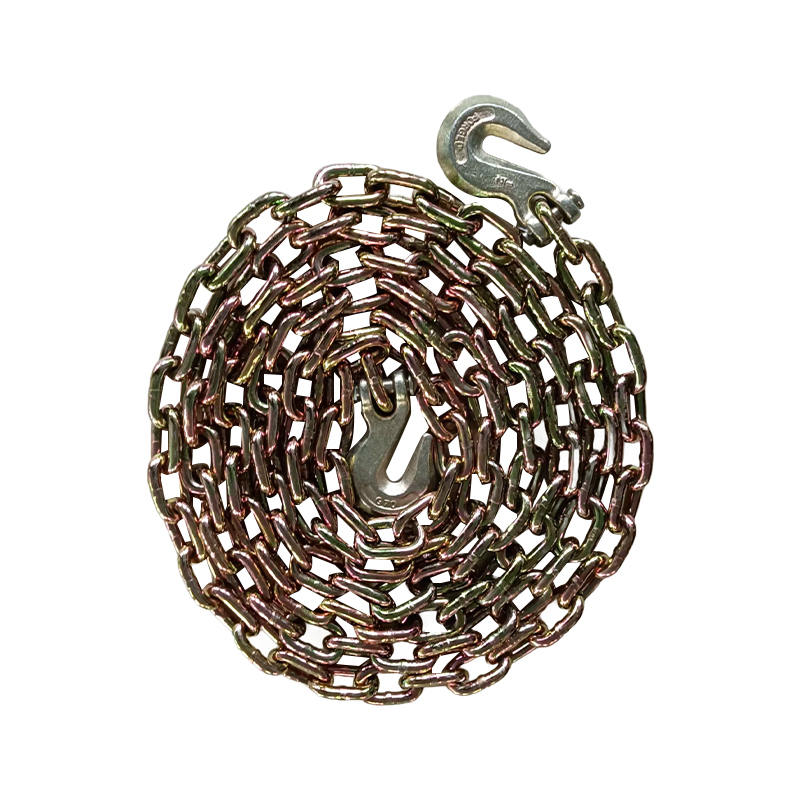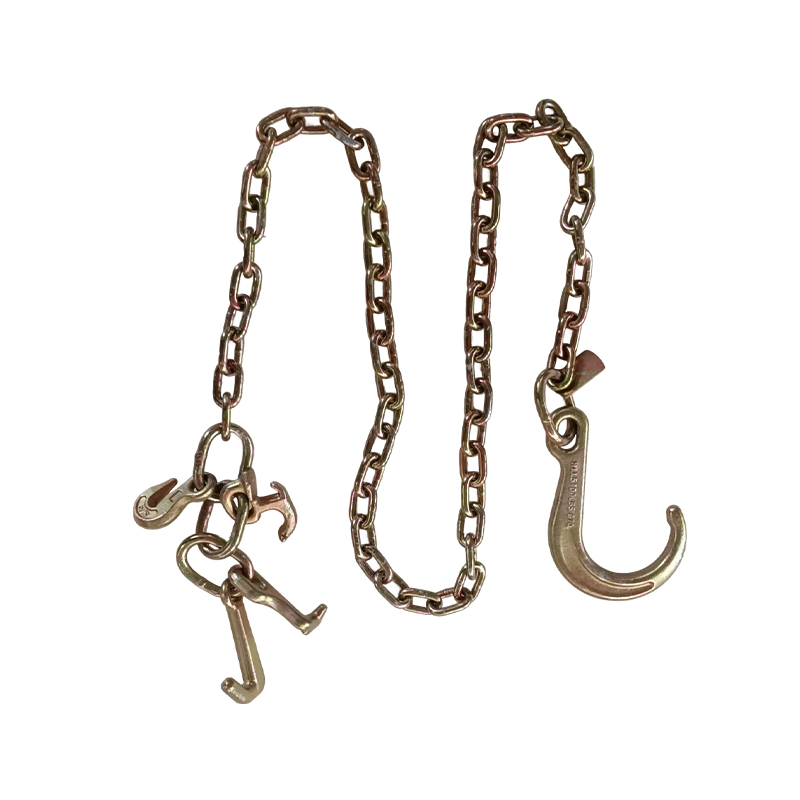Can bundling chains be used for high-altitude lifting operations?
Release Time : 2025-06-18
In modern industrial and construction projects, high-altitude lifting operations have become a common but extremely challenging task. Whether it is the installation of large mechanical equipment, the lifting of steel structures, or the transportation of building templates, reliable fixing and load-bearing tools are required. In this process, bundling chains are often considered as key components in lifting operations due to their high strength, durability and stability.
1. The role of bundling chains in lifting operations
In high-altitude lifting operations, bundling chains mainly assume the functions of connection, fixing and bearing. They are usually used in conjunction with lifting equipment such as hooks, shackles, pulleys, etc. to form a complete lifting system. For example, in bridge construction, large steel beams need to be lifted from the ground to high altitudes by cranes and accurately positioned. At this time, bundling chains play a role in stable support and auxiliary fixing.
In addition, due to the extremely high safety requirements for high-altitude operations, the structural integrity, tensile strength and anti-slip design of the chain are particularly important. The use of high-quality alloy steel enables this type of chain to cope with complex environments and become one of the preferred materials for many professional lifting teams.
2. The choice of chain type determines safety
Although some bundling chains have strong load-bearing capacity, not all chains are suitable for high-altitude lifting. Only can they be used for such high-risk operations. These chains have undergone strict quality inspections and have a higher safety factor, usually more than 4 times the working load, to ensure that they can still maintain sufficient structural strength in emergencies.
In contrast, ordinary logistics bundling chains may only be suitable for ground transportation or low-altitude fixation, lacking special anti-fatigue design and fracture warning mechanism. If they are misused for high-altitude operations, it is very easy to cause safety accidents. Therefore, when selecting a chain, its purpose must be clarified and strictly implemented in accordance with relevant industry standards.
3. Operating specifications are the key to ensuring operational safety
Even if a standard bundling chain is used, strict operating specifications and inspection systems must be followed in high-altitude lifting operations. First of all, the chain should be visually inspected before each use to confirm whether there are problems such as cracks, deformation, wear or corrosion. Secondly, during the hoisting process, the chain should be prevented from twisting, knotting or diagonal pulling to prevent excessive local force from causing breakage.
At the same time, attention should also be paid to the matching between the chain and the hoist. For example, the diameter of the chain should match the hole diameter of the shackle, otherwise it is easy to cause loose connection or slippage. In addition, chains used in humid, acidic, alkaline or high temperature environments need to be regularly treated for corrosion protection to extend the service life and ensure the safety of the operation.
4. Combine intelligent technology to improve the safety level
With the development of science and technology, more and more high-altitude hoisting operations have begun to introduce intelligent monitoring methods. For example, some high-end bundling chains are equipped with stress sensors that can provide real-time feedback on the tension data of the chain and send it to the control terminal via wireless transmission. Once overload or abnormal force is detected, the system can immediately issue an alarm to remind the operator to make timely adjustments.
In addition, some companies also coat fluorescent materials or embed RFID chips on the surface of the chain for nighttime identification and tracking management. These innovative applications not only improve work efficiency, but also provide strong support for safety management.
Bundling chains have great potential for use in high-altitude lifting operations due to their high strength, wear resistance and corrosion resistance. However, this potential can only be truly transformed into safety guarantees under the premise of scientific selection, standardized operation and reasonable maintenance.
1. The role of bundling chains in lifting operations
In high-altitude lifting operations, bundling chains mainly assume the functions of connection, fixing and bearing. They are usually used in conjunction with lifting equipment such as hooks, shackles, pulleys, etc. to form a complete lifting system. For example, in bridge construction, large steel beams need to be lifted from the ground to high altitudes by cranes and accurately positioned. At this time, bundling chains play a role in stable support and auxiliary fixing.
In addition, due to the extremely high safety requirements for high-altitude operations, the structural integrity, tensile strength and anti-slip design of the chain are particularly important. The use of high-quality alloy steel enables this type of chain to cope with complex environments and become one of the preferred materials for many professional lifting teams.
2. The choice of chain type determines safety
Although some bundling chains have strong load-bearing capacity, not all chains are suitable for high-altitude lifting. Only can they be used for such high-risk operations. These chains have undergone strict quality inspections and have a higher safety factor, usually more than 4 times the working load, to ensure that they can still maintain sufficient structural strength in emergencies.
In contrast, ordinary logistics bundling chains may only be suitable for ground transportation or low-altitude fixation, lacking special anti-fatigue design and fracture warning mechanism. If they are misused for high-altitude operations, it is very easy to cause safety accidents. Therefore, when selecting a chain, its purpose must be clarified and strictly implemented in accordance with relevant industry standards.
3. Operating specifications are the key to ensuring operational safety
Even if a standard bundling chain is used, strict operating specifications and inspection systems must be followed in high-altitude lifting operations. First of all, the chain should be visually inspected before each use to confirm whether there are problems such as cracks, deformation, wear or corrosion. Secondly, during the hoisting process, the chain should be prevented from twisting, knotting or diagonal pulling to prevent excessive local force from causing breakage.
At the same time, attention should also be paid to the matching between the chain and the hoist. For example, the diameter of the chain should match the hole diameter of the shackle, otherwise it is easy to cause loose connection or slippage. In addition, chains used in humid, acidic, alkaline or high temperature environments need to be regularly treated for corrosion protection to extend the service life and ensure the safety of the operation.
4. Combine intelligent technology to improve the safety level
With the development of science and technology, more and more high-altitude hoisting operations have begun to introduce intelligent monitoring methods. For example, some high-end bundling chains are equipped with stress sensors that can provide real-time feedback on the tension data of the chain and send it to the control terminal via wireless transmission. Once overload or abnormal force is detected, the system can immediately issue an alarm to remind the operator to make timely adjustments.
In addition, some companies also coat fluorescent materials or embed RFID chips on the surface of the chain for nighttime identification and tracking management. These innovative applications not only improve work efficiency, but also provide strong support for safety management.
Bundling chains have great potential for use in high-altitude lifting operations due to their high strength, wear resistance and corrosion resistance. However, this potential can only be truly transformed into safety guarantees under the premise of scientific selection, standardized operation and reasonable maintenance.







